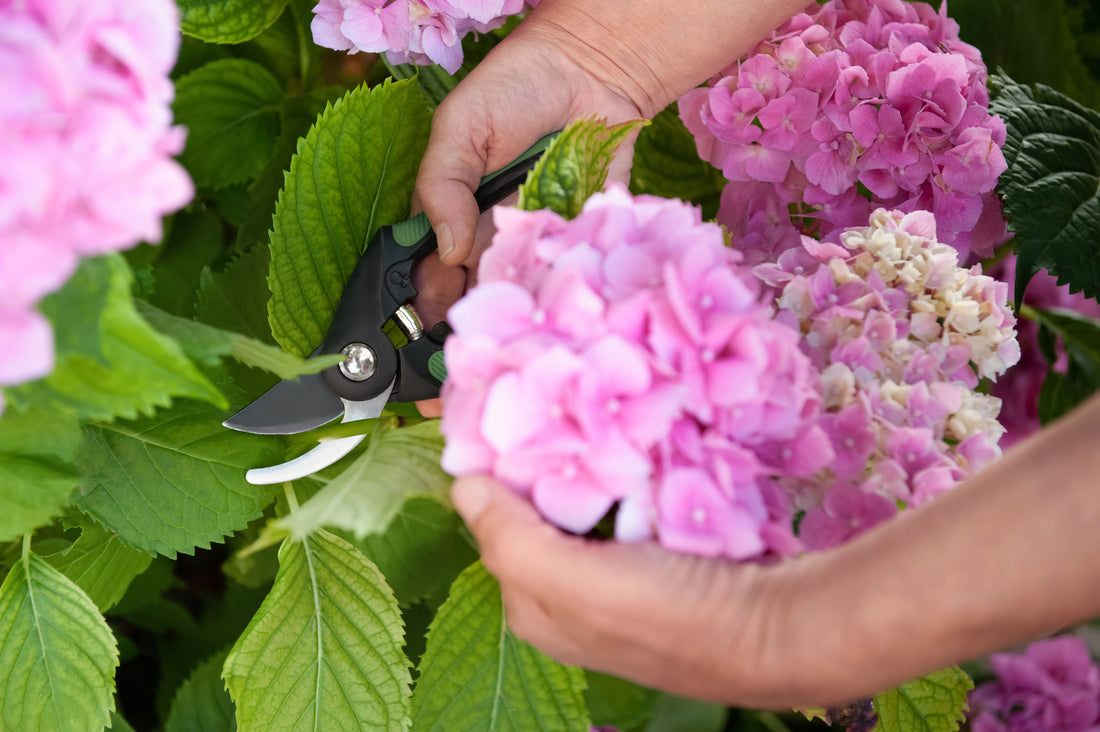How to Prune Hydrangea Macrophylla Without a Nervous Breakdown: A Step-by-Step Guide
Hydrangea macrophylla, also known as bigleaf hydrangea, is a beautiful shrub that can bloom in vibrant shades of pink, blue, and even purple—depending on your soil pH. While these garden showstoppers can easily steal the scene, they can also steal your peace of mind when it comes to pruning. Don't worry, though! I'm here to walk you through how to prune your hydrangea macrophylla without any tears (or plant casualties).
First, Let’s Get One Thing Straight: Know Your Hydrangea
Before we get into the actual cutting, you need to be sure you're dealing with a Hydrangea macrophylla, not one of its many cousins like the panicle (Hydrangea paniculata) or smooth hydrangea (Hydrangea arborescens). Hydrangea macrophylla typically has large, round clusters of flowers and thick, shiny leaves.

When to Prune Hydrangea Macrophylla (Timing Is Everything!)
Hydrangea macrophylla blooms on old wood, meaning it produces flower buds on the previous year's growth. If you prune it too late in the season (like during fall or winter), you could accidentally cut off next year’s flowers, which is just cruel. The best time to prune is immediately after flowering, usually late summer to early fall. However, if you're just tidying things up (removing deadwood, weak stems, etc.), that can be done in early spring.
Step-by-Step Pruning Process
1. Grab Your Tools
Start with a sharp pair of bypass pruners. Trust me, you don’t want to be hacking away with a dull tool that will butcher the plant more than trim it. Clean your pruners before you start to avoid spreading any diseases.
2. Remove Dead or Damaged Stems
Your first cut should be easy. Look for any stems that are obviously dead, diseased, or damaged. These can go at any time of year without harming your hydrangea. Snip them down to the base of the plant or just above the first set of healthy leaves.
3. Cut the Old Wood, Not the New
Remember, hydrangea macrophylla blooms on old wood. If you're pruning right after the bloom season, you can remove a few of the oldest stems (the ones that look a little gnarly and woody) to encourage new growth. Cut these back to the base or just above a node (where a set of leaves or buds is growing).
4. Shape the Plant
If your hydrangea is getting a little out of hand and resembles more of a jungle than a shrub, you can lightly shape it. Don’t go overboard, though—hydrangeas like a little bit of a wild look. Cut back the stems that are sticking out awkwardly or getting too tall, but make sure you're leaving plenty of old wood for next year’s blooms.
5. Deadheading: The Easy Way to Keep It Blooming

What Not to Do (aka How to Avoid Heartbreak)
- Don’t prune in spring! Unless you're cutting off dead wood, resist the urge to touch those shears in the spring. By then, next year’s flower buds are already forming, and pruning them off would be a tragedy.
- Don’t cut everything back to the ground. Hydrangea macrophylla is not a plant you can treat like a perennial grass. It needs its old wood to produce blooms, so save the aggressive cutting for a different shrub.
- Don’t over-prune. Less is more when it comes to hydrangea macrophylla. These plants love a little wildness, and hacking them down to size can reduce their natural charm.
Hydrangea Macrophylla Pruning FAQs (Because We All Have Questions)
Q: My hydrangea didn’t bloom this year! What gives?
A: You probably pruned it at the wrong time, or a late frost killed the buds. Macrophylla hydrangeas are divas about frost, so be sure to protect them if you're expecting a cold snap.
Q: Can I prune my hydrangea in the fall?
A: Yes, but only right after it’s done blooming. If you wait too long, you risk cutting off the buds for next year.
Q: What if my hydrangea is totally out of control?
A: If it’s gotten too large for your space, prune it back over a couple of seasons rather than all at once. Gradually removing the oldest stems and shaping it lightly each year will keep it manageable without sacrificing those beautiful blooms.
So, there you have it, pruning hydrangea macrophylla may sound intimidating, but it’s really about timing, a light touch, and a little bit of know-how. Just remember: prune right after flowering, focus on removing dead wood, and leave most of the old wood alone. Follow these simple guidelines, and your hydrangea will reward you with a sea of blooms year after year. Plus, you’ll get to brag to your gardening friends about how you didn't accidentally kill your plant. Win-win!
Happy gardening!
Shannon, the Garden Girl
Shannon, the Garden Girl, shows how to prune Endless Summer hydrangeas which will benefit them next season. They will come back just as big, if not bigger and will have more prolific blooms. Learn her easy pruning technique that you can use on any Hydrangea macrophylla varieties (most coloured balled shaped hydrangeas).




